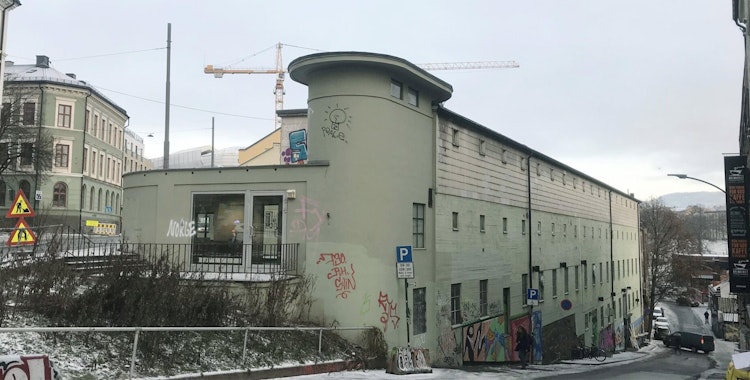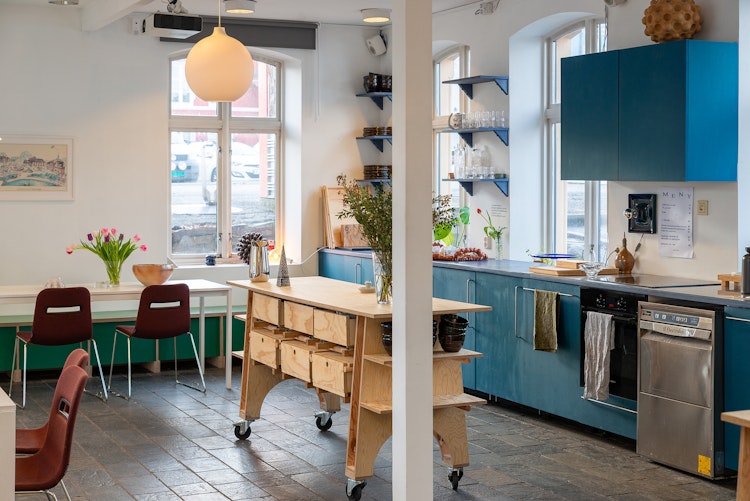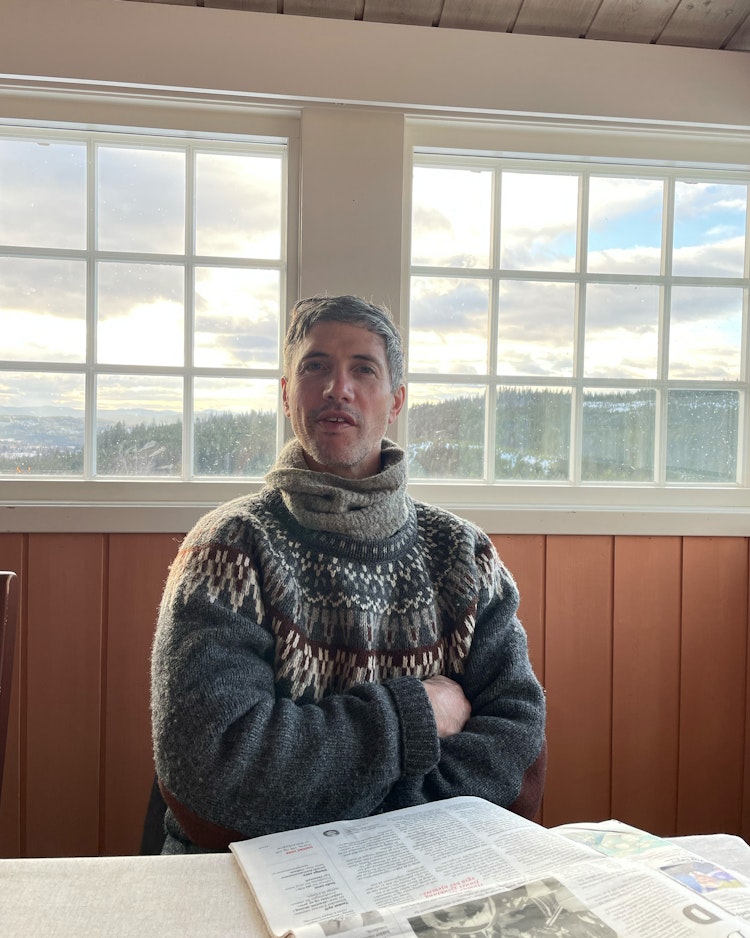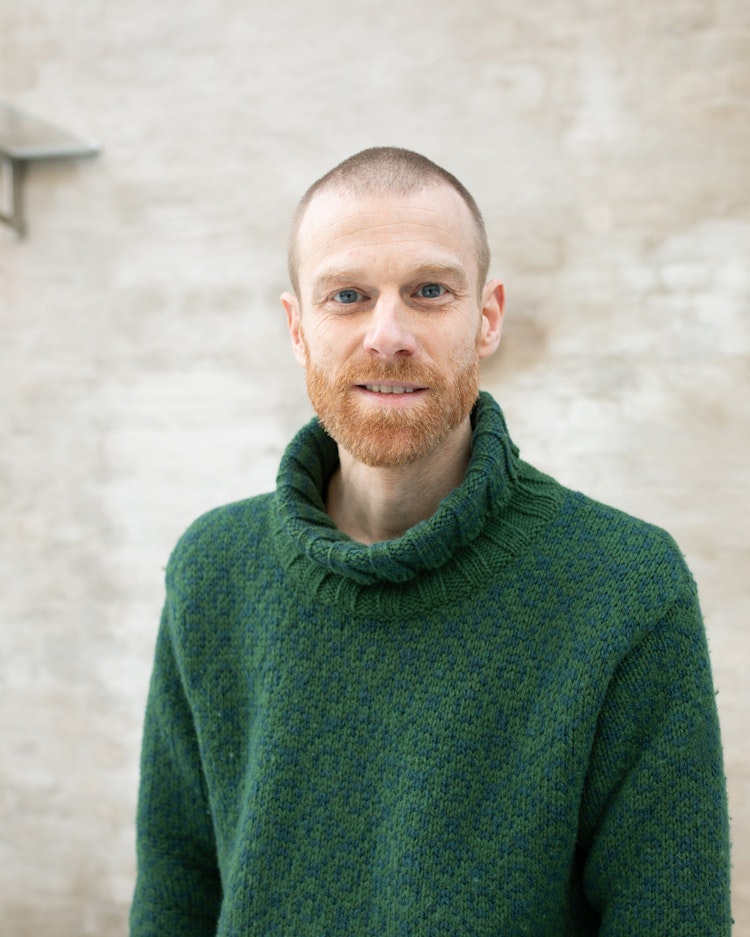Since 2005, ROM has functioned as a platform for experimental formats and interdisciplinary networks, but the premises—remodeled for gallery use in 2005—now face major challenges related to universal design, flexibility, and sustainability. At the same time, the premises are central to most of our activities: exhibitions, lectures, workshops, meeting places, and as a workplace for staff. As part of our exploration of our facilities, with an emphasis on equal accessibility, we have chosen to use only the ground floor for our activities to strengthen accessibility, and during the coming year we will carry out a pilot project in which Architects Without Borders will use the second floor.
Mulighetsrom
ROM Studio
22 September – 3 October 2025
Open to the public on weekdays and by appointment
Mulighetsrom aims to transform ROM’s premises into a more accessible, sustainable, and inclusive exhibition space and workplace. The process will be open to the public for those interested and curious to test ideas in practice.

During ROM Studio we invite various contributors to collaborate and test ideas in 1:1 scale. Through the project, we will:
- invite architects and interested visitors to a workshop focusing on clay as a building material, “design for disassembly,” and self-building.
- together with the artist duo FAT and Enrique Roura, establish a temporary ramp made from reused materials at the main entrance to ensure better accessibility for the public and ROM staff.
- test and evaluate various ultra-low-carbon building materials such as reused, biogenic, and unburned mineral materials. This provides valuable insight into how to create healthy, flexible, and environmentally friendly work environments and gives young practitioners experience with materials that rarely have room for experimentation in conventional building processes.
- develop a functional office and reception area on the ground floor with a focus on better acoustics, storage solutions, and furnishings, based on “design for disassembly” principles.
- adapt the second floor for Architects Without Borders with acoustic measures and flexible solutions built with reused materials and self-building principles.
- document and evaluate the solutions so that the experiences can be further developed into a long-term renovation plan.
The result is more than a physical upgrade of our premises—it is a social and professional transformation. We are creating better accessibility for the public, strengthening the work environment for our staff, and establishing a platform where experiences can be shared and further developed.
Participate in ROM Studio
Workshop #1 - self/edge/site
Maike Statz
Tuesday 23 September, 10:00–15:00
self/edge/site combines a presentation with a hands-on workshop for ROM studio.
Workshop #2 - Self-building
Trygve Ohren, Nøysom arkitekter
Friday 26 September, 10:00–15:00
Experiences from the experimental houses at Svartlamon, initiated by Nøysom arkitekter.
Workshop #3 - Design with reuse
ACT!
Monday 29 September, 10:00–16:00
Design with reuse is largely about the flexibility of using what you find. This day will give you an introduction and hands-on experience.
Workshop #4 - Leire / Clay
Chris Millar
Tuesday 30 September, 10:00–16:00
In this workshop with mason Christopher Millar, we explore clay plaster and rammed earth with fiber through practical experiments with various mixes and techniques—from surface treatment on concrete to formwork with clay-based mortar.
Workshop #5 - Leire / Clay
Chris Millar
Wednesday 1 October, 10:00–16:00
In this workshop with mason Christopher Millar, we explore clay plaster and rammed earth with fiber through practical experiments with various mixes and techniques—from surface treatment on concrete to formwork with clay-based mortar.
Workshop #6 - Design with reuse
ACT!
Thursday 2 October, 10:00–16:00
Design with reuse is largely about the flexibility of using what you find. This day will give you an introduction and hands-on experience.
Workshop #7 - Building
Friday 3 October, 10:00–16:00
Input from earlier days will be used for further collective building.
Sign up via the link.
A confirmation email with details will be sent after registration. Lunch will be served for participants.

Experimental houses at Svartlamon, Nøysom Arkitekter

Interior photo of HKS, courtesy of Hordaland Kunstsenter
Contributors:

Christopher Millar is a mason from Ireland who has lived in Norway since 2010. He has mainly worked with dry stone walling, as well as with lime mortar and clay mortar. In recent years, he has been employed in public administration of listed and protected buildings, but occasionally takes on smaller assignments with natural stone. He has worked with clay both as mortar for building with natural stone, brick, and cordwood, and as surface treatment in the form of plastering. He is interested in how these older mortar mixtures were originally blended and in their potential applications now and in the future.

Photo: Pauls Rietums
Maike Statz (AUS) is an Oslo-based interior architect and artist working across curation, writing, installation, and design. Her practice explores the relationship between bodies and space, reflecting on how architecture shapes emotions, behaviours, and identities—and how these, in turn, shape architecture. Maike is interested in the practical, political, and philosophical dimensions of furniture and other interior elements. Informed by feminist and queer theory, she investigates spatial inequality and seeks alternative tools and methods for space-making. Fictional spaces and the imagined architectures of science fiction and fantasy often serve as references in her work.

Trygve Ohren (b. 1983, Gjemnes), based in Hakadal. Architect, artist, and curator. Ohren is a partner in Nøysom arkitekter, known among other things for the experimental houses at Svartlamon. He is a PhD fellow in artistic research at the Department of Architecture and Planning at NTNU. Ohren previously ran RAKE exhibition space in Trondheim, was head of programming at ROM for Art and Architecture, external curator for KORO, and a member of the national jury for the Autumn Exhibition. In addition, he has extensive experience as a teacher and mediator. In his practice, Trygve works with processes and projects in the borderland between art and architecture. The frameworks for the projects are rooted in the places they take place and are often developed through processes that involve multiple actors.
Materials
We prioritise reuse and bio-based materials. This includes collaboration with Ombygg, a leading actor in circular material flow, the use of surplus materials we already have, and testing of biogenic and low-carbon materials such as clay and flax/wood fiber-based insulation materials and wool textiles. This allows us to examine the technical and aesthetic properties of materials in practice.
Building as a Learning Arena
By implementing the measures as part of a working exhibition, we open up for active participation and learning in combination with invited professionals. This strengthens social sustainability by building competence and community.
Long-Term Development
ROM Studio functions as a pilot project for a larger and more comprehensive upgrade of ROM’s premises. Everything built now is evaluated and documented. By testing on a small scale first, we can make more informed choices. The most sustainable buildings are the ones that already exist.
The project is supported by Sparebankstiftelsen DNB, Ombygg AS, Thaugland, Elements of Nature, and KUBBogleireSPONSOR.


